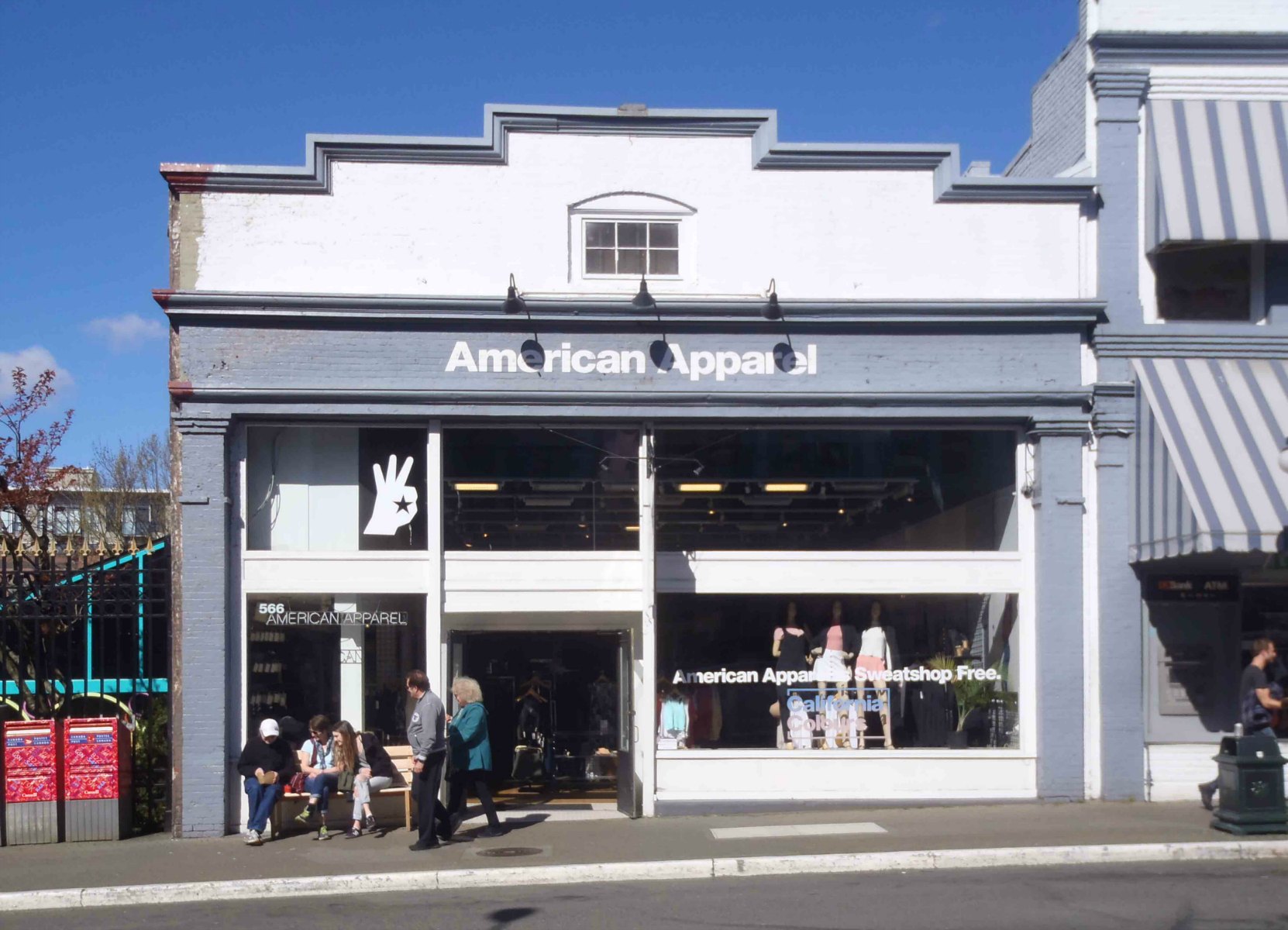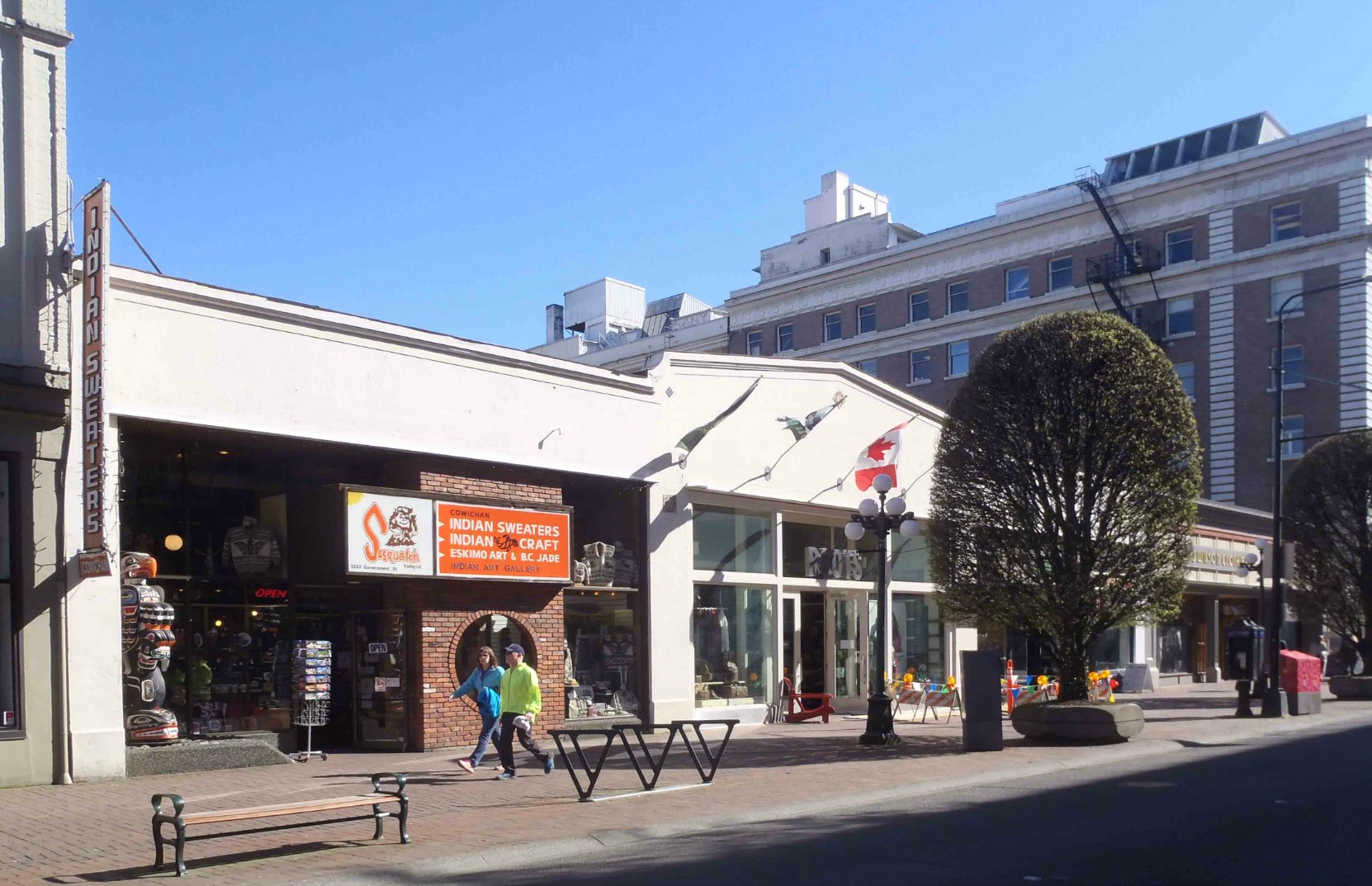Downtown Victoria Tour
Johnson Street – 500 Block
566 Johnson Street
This City of Victoria Heritage Building at 566 Johnson Street was built in 1904 by John Hepburn as a vaudeville venue called the Grand Theatre. Between 1907 and 1914 it was the Pantages Theater, part of the Pantages vaudeville circuit run by Alexander Pantages.
It is currently used a retail store and is now occupied by American Apparel.

568 Johnson Street, originally built in 1904 as the Grand Theatre. It became part of the Pantages Theatre vaudeville circuit.
Here is a map showing the location of 566 Johnson Street:
Here is a Google Street View image of 566 Johnson Street:
Additional Information About 566 Johnson Street
- Assessed Value (July 2019): $4,383,000; Land $1,558,000 Buildings $2,825,000
- Assessed Value (July 2018): $2,239,000; Land $1,360,000 Buildings $879,000
- Assessed Value (July 2017): $2,072,000; Land $1,383,000 Buildings $689,000
- Assessed Value (July 2016): $1,820,000; Land $1,315,000 Buildings $505,000
- Assessed Value (July 2015): $1,755,000; Land $1,134,000 Buildings $621,000
- Assessed Value (July 2014): $1,715,000; Land $1,071,000 Buildings $644,000
A Brief History of 566 Johnson Street
This building at 566 Johnson Street was built in 1904, at a cost of $4,000, by John Hepburn, who intended to use it as a vaudeville theatre. John Hepburn was a land developer so he hired a theatrical manager named Robert Jamieson to run the theatre for him.
Prior to the theatre opening for business, the Daily Colonist reported that “under the management of Mr. Robert Jamieson
[the theatre] has just been admitted to the big circuit of family vaudeville houses [the Grand Theatre was initially part of the Edison Unique Theatre circuit], presenting none but the biggest and best attractions…..It is to be the finest and most up to date of the family theatres of the province….It is being fitted up [as a theatre] and when finished will be very complete and cosy. Mr. Jamieson undoubtedly thoroughly understands the theatrical business, he being a pioneer in the profession here, and his friends have every reason to expect that he will make the venture a paying one. It is understood he intends providing a little higher class of entertainment than is given in some other cheaper houses, charging proportionately higher prices.”
The Grand Theatre opened on 23 May, 1904. The opening night attractions were The Juggling Burkes (“Every lady,” reported the Daily Colonist, “enjoys good club juggling and the juggling Burkes are wonders in their line and besides are expert hoop rollers.”), the Rice Brothers (“German comedians with a dialect that would make a person grey trying to unravel it”), the Three Marvelous Dentons (“acrobats, and stars at their work”), a singer, Signor Juan Peralto, with “a new and catchy song entitled ‘When The Sunset Turns The Ocean’s Blue To Gold‘” and, as a finale, “Edison’s up to date and fascinating moving pictures, shown with a new and latest model kinetoscope….”
In 1905 John Hepburn withdrew from direct involvement in the theatre business. While retaining ownership of the building, John Hepburn leased the Grand Theatre to his former manager, Robert Jamieson, who ran the theatre in partnership with his brother.
Robert Jamieson appears to have run into business problems. By the spring of 1907, his lease payments to John Hepburn appear to have been in arrears and the Grand Theatre had been closed for extended periods since 1905.
With Robert Jamieson’s lease payments in arrears, John Hepburn sold this building to McPherson & Co., whose principal owner was Thomas Shanks McPherson, for $12,500. In May 1907, McPherson & Co. leased this building to Alexander Pantages, who ran the Pantages vaudeville circuit from Seattle, Washington.
This building was operated as the Pantages Theatre and the Bijou Theatre until 1914, when the Pantages Theatre moved to what is now the McPherson Playhouse, in which Thomas Shanks McPherson held a major share.
After the Pantages Theatre moved in 1914, this building was used by a variety of businesses. Between 1914 and 1920 it became a second hand store. Between 1920 and 1935 it was the Clyde Sheet Metal Works. By 1950, Jeune Brothers was using this building as well as the adjacent building at 570 Johnson Street. This arrangement lasted until the 1980’s.
It is currently occupied by American Apparel.
Here are links to some historic photos on this building:
- BC Archives photo D-05695 – the Pantages Theater, circa 1910
- City of Victoria Archives photo M01222 – 1960
- City of Victoria Archives photo M01223 – 1960
Here are links to some Historic Victoria Advertisements featuring this building:

April 1909 advertisement by Fletcher Brothers, 1231 Government Street, mentioning a performance at the Grand Theatre on Johnson Street. (Victoria Online Sightseeing collection)
1909 Advertisement For Fletcher Brothers And The Grand Theatre
This 1909 advertisement for “Talking Records” was placed by Fletcher Brothers, a music store then located at 1231 Government Street.
Fletcher Brothers was trying to sell records made by Cal Stewart, who was then appearing live at the Grand Theatre performing his character Old Uncle Josh.

This commercial building at 1223-1227 and 1233 Government Street was likely built in the late 19th century. It is currently home to Roots (1227 Government) and Sasquatch Trading (1233 Government)
Would you like to leave a comment or question about anything on this page?
Error: Contact form not found.

Get Social